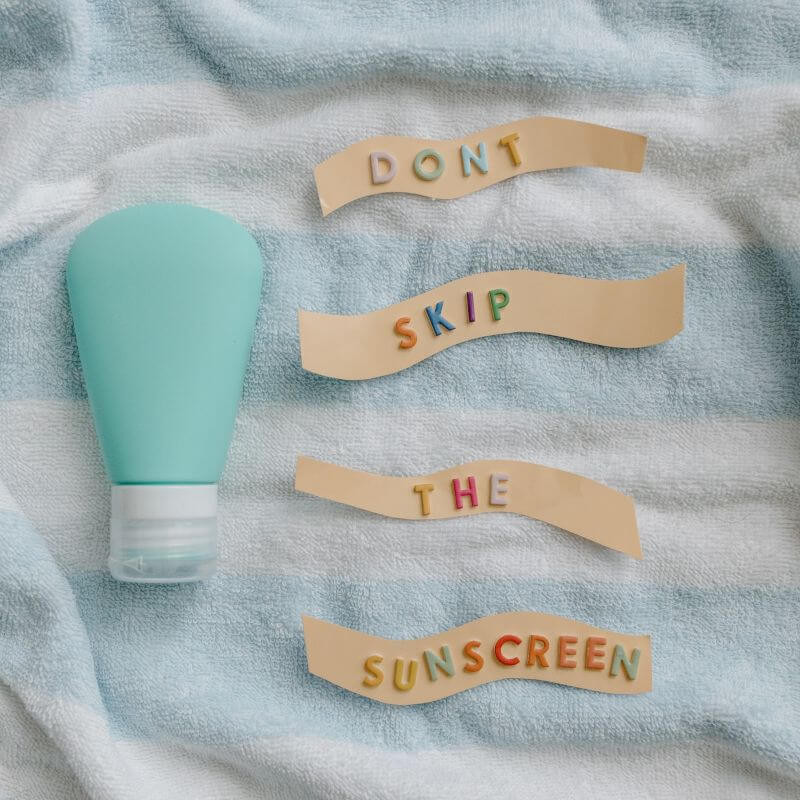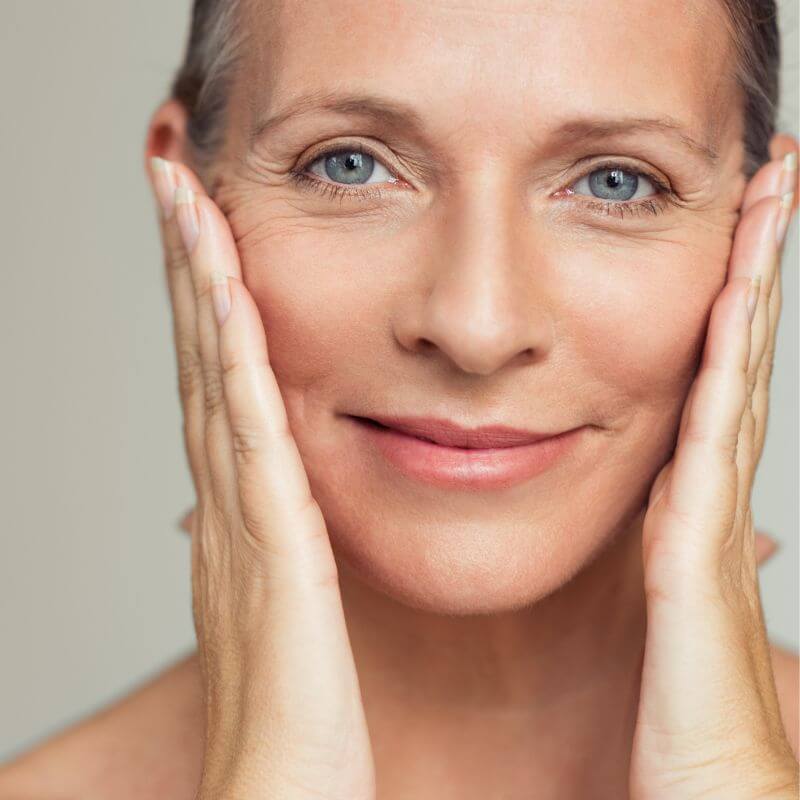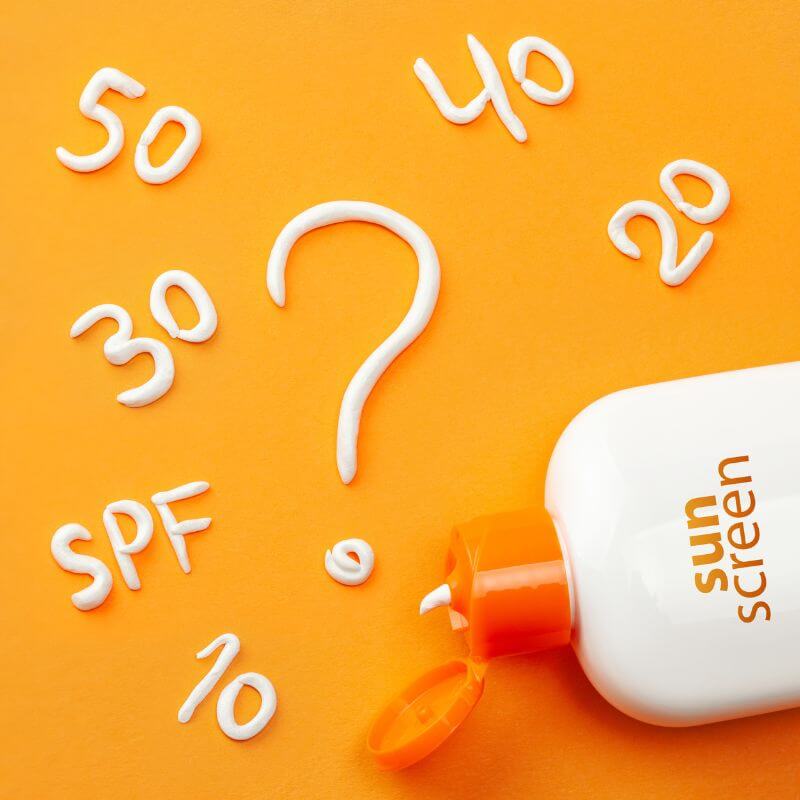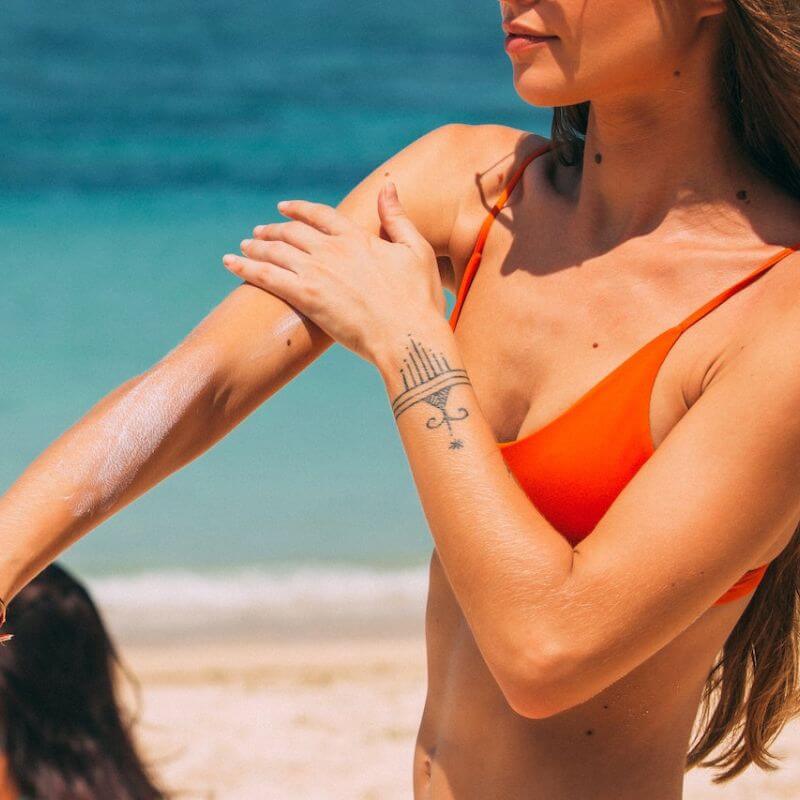Even though sunscreen is an essential part of our AM skincare routines, the fact is: a lot of us skip sunscreen on most days. According to the 2020 RealSelf Sun Safety Report, only 11% of Americans wear sunscreen daily; almost 46% never wear sunscreen at all.
You’ve probably heard this before; but let us say it out loud once again – Do not skip sunscreen!

Wearing SPF daily is non-negotiable, irrespective of the time of the day or year, where you are (indoors or outdoors), or even the weather and season (even during the monsoons and winters!) Sunscreen doesn’t just prevent sunburns; it does a lot more, like shielding your skin from harmful UV rays, preventing photoaging, etc.
Let’s learn more about the importance of using sunscreen daily. Also, how to find an excellent ocean-friendly sunscreen for ourselves.
Why should you not skip sunscreen?
There are several reasons why wearing sunscreen can benefit us. Here are a few important ones that will encourage you to never skip sunscreen.
1. Much-needed protection from UV rays

The sun is a powerful source of harmful UV rays. Without sunscreen, the UVA and UVB rays can penetrate your skin quickly and cause irreversible damage.
It is not just dangerous for adults; even young kids can get sunburned. Up to 80% of the sun’s UV rays can reach you even on cloudy days. Protecting yourself is important, especially in fall and winter when the weather is cold and dry.
The American Academy of Dermatology recommends applying SPF 30 or greater every two hours when outdoors between 10am and 2pm in order to receive adequate protection against damaging UV rays for the entire day.
Myth: We only need sunscreen when we’re outdoors and exposed to the sun.
Truth: It is advised to wear sunscreen not just outdoors but even when we are indoors. This is because up to 75% of skin-damaging UVA rays can pass through window glass.
2. Photoaging is real

Photoaging refers to accelerated skin aging due to prolonged exposure to light. This includes exposure to sun rays, high-energy visible (HEV) light, and infrared light.
According to the Skin Cancer Foundation (SCF), ‘Responsible for 90 percent of visible changes to the skin, photoaging is a direct result of cumulative sun damage you’ve been exposed to throughout your life.’
It is mostly the UVA rays that are responsible for visible sun damage and tanning. The tan is a sign of our skin’s natural way of protecting us from the ultraviolet radiation from the sun.
The outermost layer of the skin (the epidermis) produces melanin which shields our skin from sun damage. Therefore, the sun can give us a tan or darker skin tone. When the melanin in the skin is not enough to protect us, there are chances for us getting a sunburn.
Moreover, it is a known fact that, ‘People who use sunscreen with an SPF of 15 or higher daily show 24 percent less skin aging than those who do not use sunscreen daily.’
3. Lowers risks of skin cancer

According to the Skin Cancer Foundation,
- Ultraviolet (UV) radiation is a proven human carcinogen.
- Skin cancer is the most common cancer in the United States and worldwide.
- Having 5 or more sunburns doubles your risk for melanoma.
- About 90 percent of nonmelanoma skin cancers are associated with exposure to ultraviolet (UV) radiation from the sun.
- Regular daily use of an SPF 15 or higher sunscreen reduces the risk of developing melanoma by 50 percent.
All these facts clearly suggest that using sunscreen can significantly reduce the risk of developing skin cancers.
The UV rays from the sun can penetrate our skin in the absence of sunscreen and alter the DNA of our skin cells. Such genetic mutations can lead to skin cancer.
Yes, skin cancer is the most common form of cancer, but it is also the most preventable type of cancer. The prevention being (you guessed it right!) – using SPF daily.
How to find the right sunscreen?

With hundreds of sunscreen options available in the market, finding a sunscreen that’s safe for you can be tricky — especially if you’ve never used one before.
Here’s a little tip: The key is to look for something that’s reef-safe, non-nano zinc oxide, and broad spectrum.
Following these steps will help you find the right sunscreen for your skin.
1. Look for reef-safe sunscreen
Certain UV filters called oxybenzone and octinoxate, generally found in conventional sunscreens, harm coral reefs and marine life in the oceans.
While there’s no way to guarantee that your sunscreen will never get into the ocean, here are some ingredients you should avoid:
- Oxybenzone
- Octinoxate
- Octocrylene
- Homosalate
- 4-methylbenzylidene camphor
- PABA
- Parabens
- Triclosan
- Any nanoparticles or “nano-sized” zinc or titanium (if it doesn’t explicitly say “micro-sized” or “non-nano” and it can rub in, it is probably nano-sized)
- Any form of microplastic, such as “exfoliating beads”
Look for reef-safe products that say they are reef-safe on the label, or on the website where you purchase them. See if the products have certifications like ‘Reef Friendly’ by BIORIUS or Protect Land + Sea Certification Seal.
Buy from companies that have been working with coral reefs for years and understand what danger these corals face from sunscreen chemicals.
Our top picks include –
Related Articles: What Makes Sunscreens Eco-friendly? How To Find The Most Ocean-Friendly SPF?

2. Choose SPF 30 or higher
The SPF number means how much longer it will take for the UV rays to burn our skin when we apply the product exactly as directed, in comparison to when we are not wearing any sunscreen.
This means a product with SPF 30 will take 30 times longer and SPF 50 means 50 times. In other words, SPF 30 only allows 3% of UV rays to pass through and SPF 50 will only allow 2%.
While the difference seems small, it can make a huge difference as it can be a task to reapply sunscreen every now a then.
Thus, it is advised to choose products with SPF 30 or higher when choosing sunscreen.
3. Make sure to get broad-spectrum protection
Broad-spectrum sunscreens offer protection from both UVA and UVB rays. The UVA component of sunlight is the more harmful of the two, so the higher-quality broad-spectrum sunscreen should provide more effective protection against this form of radiation.
Apply the sunscreen at least 15 minutes before going outdoors to allow time for it to get absorbed into your skin. This will make it much harder for you to burn under the sun and protect you from potentially damaging UV rays.

4. Consider your skin type
Not all sunscreens work for all skin types. For example, if you have oily skin, then a mattifying sunscreen will work best for you. Whereas someone with dry or sensitive skin will need a more hydrating and moisturizing sunscreen.
These days, the market is flooded with different sunscreen compositions that are well-tested for different skin concerns.
Look for a sunscreen with ingredients like hyaluronic acid or glycerin if you have a dry to normal skin type. While for those with acne-prone or oily skin, there are lightweight and quick-absorbing options available that don’t look greasy or shiny.
Lastly, for sensitive skin, the best options are mineral sunscreens as the formula works better than chemical filters, without causing irritation.
Bottom line
If you have made it this far, we believe (and hope) that you are definitely going to apply (and reapply!) sunscreen every day. We suggest carrying a travel-size sunscreen in your bag to make sure you never skip sunscreen.
Just find a product you love and trust, try to remember to use it every day, and protect your skin from all kinds of sun damage.
If you are looking to learn more about sustainable skincare practices, here is one of our favorite articles to begin with – A Guide To Make Your Skincare Routine Sustainable











